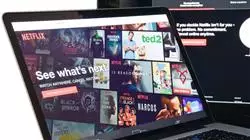University certificate
The world's largest faculty of journalism and communication”
Introduction to the Program
Companies are looking for professionals like you, able to adapt to the new era and create relevant content for the public”

Consumers in the 21st century are very clear about what they want and don't want when it comes to advertising. Gone are those invasive promotions that did nothing but cause audience rejection. Users want to enjoy advertising, but from a different point of view. Not just as mere spectators, but as real customers who need their opinions to be heard and heeded. For this reason, advertisers and content creators are betting on telling stories that go beyond showing a product. Now, it is necessary to create a brand image, show the company's values, create emotions, etc. In short, contact with the public and build loyalty.
In this process, many communication and advertising agencies bet on the application of marketing techniques to develop their messages, so that they can offer the viewer more personalized communications adapted to their needs. With this Postgraduate diploma in Branded Content from TECH Global University, students will have access to specialized content on the subject, prepared by a teaching staff with extensive experience in the sector, and that will allow them to develop the skills demanded by today's leading companies.
A syllabus that covers from the principles of communication to the creation and management of virtual communities, but that, as it could not be otherwise, focuses on the main strategies of Branded Content . In addition to its quality, this program stands out for being offered in a 100% online format, so the students will have the possibility to manage their own study time, having free access to all the contents and educational resources for the 6 months that the qualification lasts.
Become a successful content creator and stand out in a highly competitive job market"
This Postgraduate diploma in Branded Content contains the most complete and up-to-date educational program on the market. The most important features include:
- The development of practical cases presented by experts in Communication
- Its graphic, schematic and eminently practical contents are designed to provide theoretical and practical information on those disciplines that are essential for professional practice
- New developments in Branded Content
- Practical exercises where self-assessment can be used to improve learning
- Its special emphasis on innovative methodologies in Branded Content
- Algorithm-based interactive learning system for decision-making in the situations that are presented to the student
- Theoretical lessons, questions to the expert, debate forums on controversial topics, and individual reflection assignments
- Content that is accessible from any fixed or portable device with an Internet connection
With an increasingly well-informed audience, we need to create compelling advertising stories that engage them and create unforgettable experiences”
Its teaching staff includes professionals from the field of Communication, who contribute their work experience to this program, as well as renowned specialists from prestigious universities and reference societies.
The multimedia content, developed with the latest educational technology, will provide the professional with situated and contextual learning, i.e., a simulated environment that will provide an immersive program designed to learn in real situations.
This program is designed around Problem-Based Learning, whereby the student must try to solve the different professional practice situations that arise throughout the program. For this purpose, the student will be assisted by an innovative interactive video system created by renowned and experienced experts.
A 100% online program with which you will develop the skills to become a successful content creator "

Major brands will want you to be part of their workforce so that you can connect with their audience and generate positive feelings"
Syllabus
Commercial communication requires a series of requirements to be truly effective. Persuasive language, an impactful image or focus on the brand are just some of the issues that must be taken into account when creating an advertising campaign. But it is also necessary to apply Branded Content techniques that favor the diffusion and acceptance of the public. This syllabus is oriented to favor the learning of journalists and communicators in this field, through a very complete syllabus that is distributed into 3 modules.

Design stories that create value for your brand thanks to the specific knowledge provided by this program”
Module 1. A New Communication Paradigm
1.1. Media Transformation and Audience Fragmentation
1.1.1. The New Role of the Media
1.1.2. The Citizen Facing the Digital Revolution
1.1.3. Consumption and Infoxication
1.2. Media Convergence
1.2.1. Technological Convergence
1.2.2. Socio-Cultural Convergence
1.2.3. Corporate Convergence
1.3. Internet 2.0: from Monologue to Dialogue
1.3.1. The Fragmentation Process
1.3.2. The Effect of Technology
1.3.3. The Questioning of Traditional Media
1.4. Long Tail
1.4.1. Long Tail Business Models
1.4.2. Elements of a Long Tail Model
1.5. The New Prosumer
1.5.1. The Third Wave
1.5.2. Spectators vs. Influencers
1.6. Internet 2.0
1.6.1. Penetration and Usage Data
1.6.2. From Monologue to Dialogue
1.6.3. The Internet of Things
1.7. Participatory Culture
1.7.1. Features
1.7.2. Internet and Public Opinion
1.7.3. Co-Creation
1.8. The Ephemeral Attention
1.8.1. Multimediality
1.8.2. Multi-Tasking
1.8.3. The Collapse of Care
1.9. Hardware: From the Black Box to the Hyperconnected Home
1.9.1. The Black Box
1.9.2. New Devices
1.9.3. Breaking Down the Digital Divide
1.10. Towards a New Television
1.10.1. Premises of the New TV
1.10.2. Self-Programming
1.10.3. Social Television
Module 2. Creation and Management of Digital Communities
2.1. A Virtual Community and Where We Can Create Them
2.1.1. Types of User
2.1.2. Spaces Where Virtual Communities Can Be Created
2.1.3. Particularities of these Spaces
2.2. Facebook and Instagram Community Management
2.2.1. Community Creation and Management Tools
2.2.2. Possibilities and Limits
2.3. Twitter Community Management
2.3.1. Community Creation and Management Tools
2.3.2. Possibilities and Limits
2.4. YouTube Community Management
2.4.1. Community Creation and Management Tools
2.4.2. Possibilities and Limits
2.5. Twitch Community Management
2.5.1. Community Creation and Management Tools
2.5.2. Possibilities and Limits
2.6. Management of Future Communities in Emerging Spaces: Your Keys
2.6.1. Keys to Be Taken into Account in the Analysis of the Commented Networks
2.6.2. What Steps to Take When New Social Networks are Launched?
2.6.3. Speeches and Dialogues
2.7. How to Trigger Content Generation by Users?
2.7.1. Prosumer after COVID
2.7.2. Contests, Sweepstakes and Campaigns
2.7.3. Connection with Social Networks and Transmedia
2.8. Content Planning and Measurement I
2.8.1. Types of Content and Writing
2.8.2. Content Structuring
2.9. Content Planning and Measurement II
2.9.1. Measurement of Actions in Social Networks
2.9.2. Impact on Google
2.9.3. Decision-Making
2.10. Development of Contents in Blogs and their Movement through Networks
2.10.1. The Importance of Blogging Today
2.10.2. Techniques for Content Movement through Networks
2.10.3. Crisis Resolution
Module 3. Branded Content: Brands like Publishers
3.1. The Traditional Advertising Model: Push
3.1.1. Key Aspects of Push Communication Strategies
3.1.2. Origins and Evolution
3.1.3. The Future of Strategies Push
3.2. The New Model Pull
3.2.1. Key Aspects of Pull Communication Strategies
3.2.2. Origins and Current Context
3.2.3. Keys to Success
3.3. Branded Content
3.3.1. Branded Content, Content Marketing and Native Advertising?
3.3.2. How to Identify Branded Content?
3.4. Brands like Publishers: Implications
3.4.1. The New Value Chain
3.4.2. Implications
3.4.3. Models
3.5. Branded Content and its Role in the Communication Mix
3.5.1. Current Context
3.5.2. Branded Content and Brand Purpose
3.5.3. Inspiring Case Studies
3.6. The Coexistence of Content and Advertising
3.6.1. Differences
3.6.2. Contribution to Brand Equity
3.6.3. Examples of Coexistence
3.7. Branded Content: Formats and Genres
3.7.1. Genre
3.7.2. Other Approaches, Other Genres
3.7.3. Formats
3.8. Creation Methodology of Branded Content
3.8.1. Strategy
3.8.2. Ideation
3.8.3. Production
3.9. The Importance of Promotion in Branded Content
3.9.1. Methodology
3.9.2. Phases
3.9.3. Formats
3.10. Measuring the Effectiveness of Branded Content
3.10.1. How to Measure a BC Project?
3.10.2. Qualitative and Quantitative Measurement
3.10.3. Metrics and KPI s

Become an expert in digital content creation and open the doors to new job opportunities”
Postgraduate Diploma in Branded Content
Branded Content is a type of marketing that focuses on generating attractive, interesting and entertaining content that, at the same time, is related to the brand and its values. This content can take various forms, such as videos, articles, social media posts, podcasts, among others.
Marketing professionals who specialize in the creation and execution of branded content (Branded Content). This type of content is intended to reinforce the brand image and increase the consumer's connection with the brand. The Branded Content specialist's job is to create and manage branded content, make sure it fits the brand's image and values, and that it is in line with the brand's marketing strategy. The specialist must be able to identify the needs and preferences of the target audience, in order to create content that is relevant to them and generates a connection with the brand.
In addition, the Branded Content specialist must also have storytelling skills and be creative in order to be able to create stories and content that will engage the audience and be relevant to them. He/she must be able to identify the right channels for the content and thus, carry out a complete and coherent strategy.
This academic program is designed to develop your marketing, creative and storytelling skills, to focus on creating and managing branded content that is engaging and relevant to the target audience. The goal is to strengthen your brand image, increase your connection with your audience and achieve your marketing objectives.







